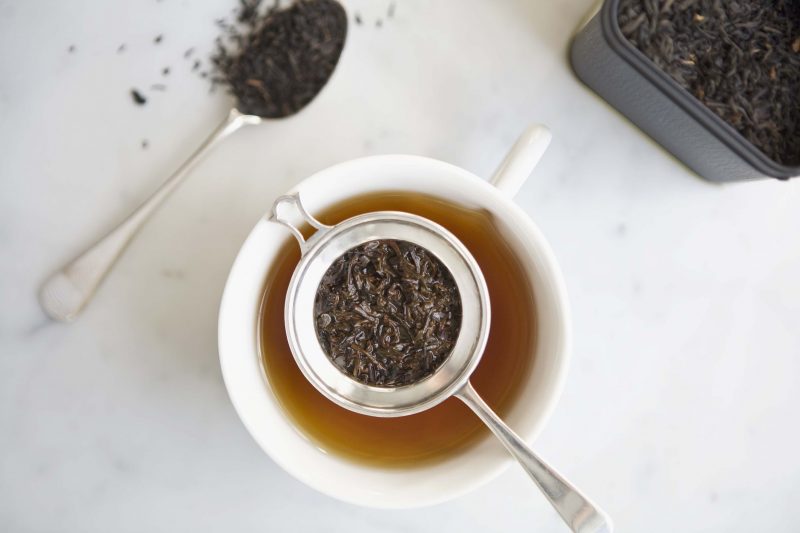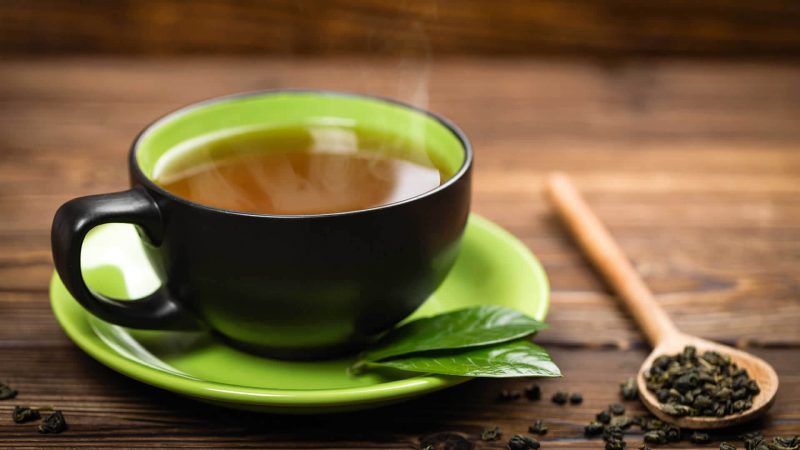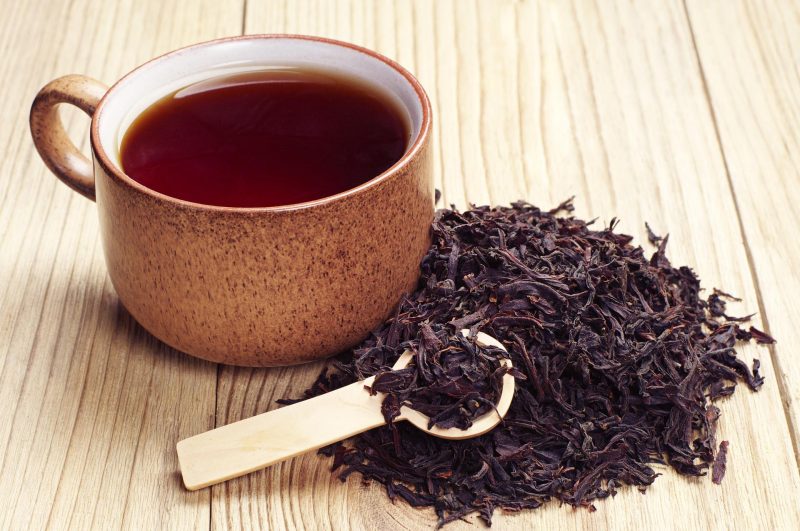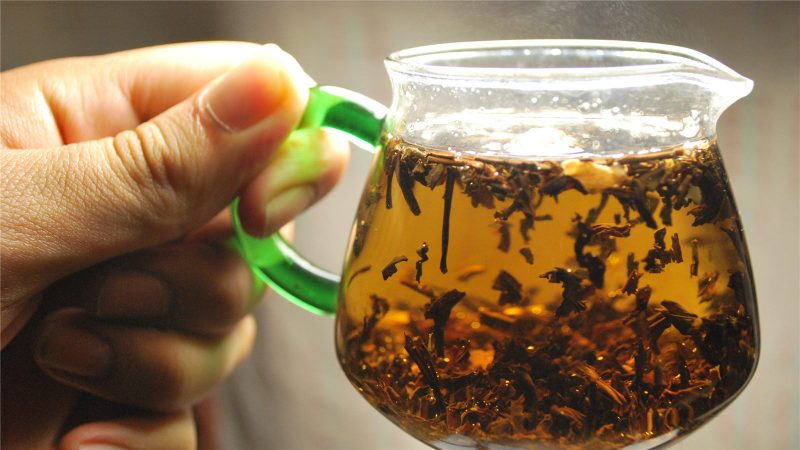Many people drink tea constantly and in considerable quantities. For most, a cup of strong tea in the morning is sacred. Being interested in whether there is caffeine in tea, you first need to pay attention to the action of this drink. A cup of aromatic and strong tea gives vigor, nourishes with energy and increases efficiency.
Material Content:
Does green and black tea have caffeine?
Caffeine is an alkaloid produced by many representatives of the plant world to protect against pests. This substance has the ability to excite the nervous and accelerate the work of the cardiovascular system.

In the body, this is manifested as follows:
- heartbeat accelerates;
- blood pressure rises;
- cerebral circulation improves;
- Stimulation of gastric juice is stimulated;
- vessels are narrowed;
- breathing quickens;
- urination increases;
- mood improves;
- drowsiness passes;
- working capacity increases.
For a healthy body, this effect is not dangerous. But for excitable individuals and people with heart disease, it is better to abandon the use of caffeinated drinks.
So, is there caffeine in tea? The answer is yes. At the same time, the amount of caffeine in green tea is often about the same as in heavily brewed black. Previously, thein was discovered in tea leaves as a substance with a similar effect. Then the researchers concluded that these components are absolutely identical, so now they are used as synonyms. But still, thein is slightly different from its counterpart: it does not accumulate in the internal organs and does not cause a caffeine overdose.
It must be remembered that the maximum permissible dose of caffeine is 1000 mg, a single dose is 2.5 times less.
Exceeding these parameters negatively affects the functioning of the heart and can even lead to death. The maximum content of a substance in the blood is observed 40-60 minutes after ingestion, the main part is excreted within 6-12 hours.
Where more caffeine in tea or coffee
Discussed drinks may well compete with each other in the content of this component.
In dried raw materials for tea production, the concentration of thein is higher than in coffee beans, but this ratio changes during the brewing process. For example, in a cup of instant coffee drink it is exactly as much as in the same amount of green tea, which was brewed for at least 5 minutes.

But you need to take into account that coffee is rarely drunk by more than one small cup with a capacity of 30 ml. Many people drink tea in large cups of 200 - 230 ml, and even in several doses. Therefore, during such a tea party you can get a decent dose of this substance.
Brewing time is also an important parameter. There will be much more thein in a cup of well-brewed tea than in the same amount of weak coffee with milk.
Table: how much caffeine in tea
Many are interested in specific figures, how much caffeine is in black tea and in its other forms. Interestingly, this depends on the specific varieties, as well as on the brewing time of the drink - the longer it brews, the more thein will be extracted from the leaves.

Also, much depends on the time of leaf collection, production technology and the quality of the final product. For example, the earlier the raw material is collected, the less thein is in it. In small leaves, the concentration of this substance is much higher.
| Type of tea | Caffeine content in a cup of drink |
|---|---|
| Black fermented | 14 to 70 mg |
| Green | 45 to 70 mg |
As a rule, the maximum concentration of thein is found in strong black or green tea, the minimum - in milk oolongs. The variety also plays an important role. Delicious and light white tea “Bai Hao Yin Zhen” contains a higher percentage of thein than the dark and rich “Show Mei”.
In which tea there is no alkaloid at all
The maximum concentration of thein in the upper leaves. Large leaves on the lower branches contain less than 1 - 2%. Elite varieties are prepared from the upper leaves, and the cheapest ones from the lower ones.
Therefore, the cheaper the tea, the less thein in it.

From non-caffeinated drinks, teas from other plants can be distinguished - Ivan tea, chamomile, hibiscus, linden, mint, lemon balm, thyme, and other herbal preparations. You can reduce the amount of thein in tea like this: add some of the other components to it - a slice of lemon, some berries, 1 tsp. chamomile or thyme.
Decaffeinated Caffeine
Decaffeinated tea is indicated by the letter "D". But this does not mean that in products with a similar labeling this substance does not exist at all. A small amount remains of the initial volume - 3%, but caffeine is still present in such drinks. Of course, this amount is so insignificant that it can hardly do any harm, but you should pay attention to the methods of decaffeination - not all of them are considered safe for human health.

The methods of decaffeination are diverse:
- The use of carbon dioxide. The raw materials treated with steam will be placed in a special container with СО2 under a pressure of 100 - 250 atmospheres and held for at least 9 hours. When the pressure is removed, the gas evaporates and the caffeine is easily removed by filtration. This method is non-toxic, allows you to fully preserve the taste of tea. However, it is rarely used, as it requires large investments.
- The use of ethyl acetate. This substance can be organic (derived from fruits or vegetables) or synthetic. First, the feed is treated with steam, and then with ethyl acetate for at least 10 hours. After this, the feed is further processed to remove residual solvent. It has low toxicity, but strongly affects the taste and smell.
- The use of methyl chloride. This method cannot be called safe.A toxic chemical is quite dangerous, therefore, companies selling such tea do not advertise their methods of processing raw materials.
Tea leaves contain a lot of complex chemical compounds, and with any treatment a significant part of them is lost. It is difficult to ensure that caffeine is absent, and the remaining components remain in the original volume.
Decaffeinate tea itself will not work. It is believed that draining the first water helps to remove most of the substance. However, this technology only works with ground tea leaves. In addition, in the process of such a procedure, the drink loses its flavor and aromatic properties. Large-leaf varieties, together with a pleasant taste and aroma, retain a high content of thein for a long time.
Decorated drinks do not have a rich taste. Therefore, it is better to purchase varieties with fruit additives in order to enjoy the taste of tea. People suffering from diseases of the heart and blood vessels can drink this tea without restrictions - up to 8 glasses per day.
Based on the foregoing, we can conclude that the caffeine content in tea is quite substantial. However, with wise use, the drink brings many benefits, so choose a quality product and drink without fanaticism, enjoying every cup.












